23.12.2020
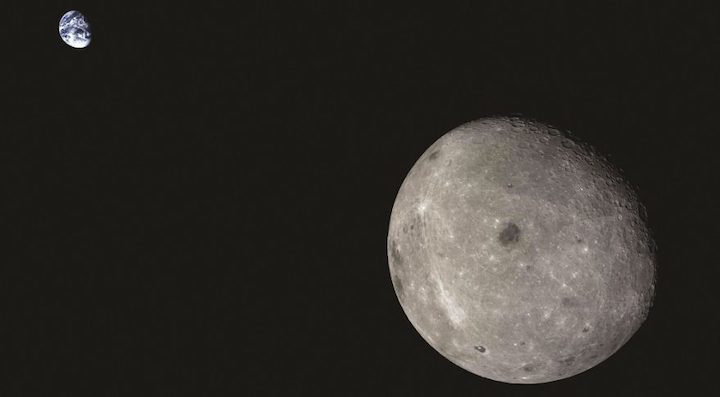
HELSINKI — China’s Chang’e-5 orbiter is heading for a gravitationally stable point in space on an extended mission after delivering fresh lunar samples to Earth.
The spacecraft is now heading to a Sun-Earth Lagrange point to carry out observations of the local environment, the Sun, and perform operational tests.
The Chang’e-5 orbiter left lunar orbit late Dec. 12 Eastern along with a return capsule containing lunar samples. The two spacecraft separated around 5,000 kilometers from Earth Dec 16., with the return capsule performing a ‘skip’ reentry into the atmosphere. The return capsule landed at 12:59 Eastern Dec. 16 with 1.731 kilograms of lunar materials.
Meanwhile the orbiter had conducted an avoidance burn. It was initially unclear if the avoidance burn referred to avoiding the return capsule or the Earth’s atmosphere.
Amateur radio operators first confirmed the Chang’e-5 orbiter was still in space and heading towards the moon. Official confirmation has now been provided as to the spacecraft’s status.
Hu Hao, a chief designer of the third (sample return) phase of the Chinese lunar exploration program, told China Central Television (Chinese) Dec. 20 that the orbiter is now on an extended mission to a Sun-Earth Lagrange point.
Hu said the extended mission was made possible by the accurate orbital injection by the Long March 5 launch vehicle, the same rocket which failed in July 2017 and delayed Chang’e-5 by three years. The Chang’e-5 orbiter has more than 200 kilograms of propellant remaining for further maneuvers.
While unspecified, it is believed that the Chang’e-5 orbiter will enter orbit around L1, based on the reference to planned solar observations. The orbiter is equipped with optical imagers.
The team will decide on a further destination after tests and observations have been conducted, Hu said.
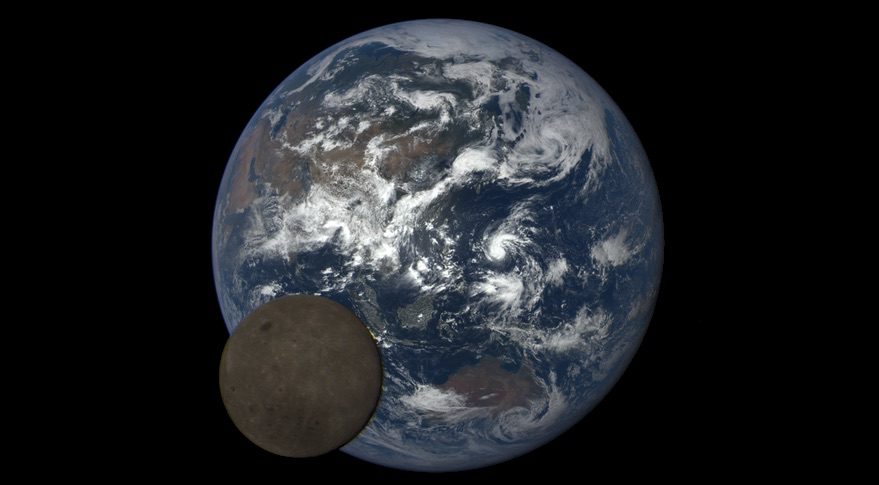
Chang’e mission extensions
Chang’e-2, which orbited and mapped the moon in 2010, later visited Earth–Sun L2 Lagrangian point to test tracking and ground networks. It then performed a flyby of asteroid 4179 Toutatis.
The orbiter the 2014 Chang’e-5 T1 mission to test a skip reentry of the return capsule was likewise sent an extended mission after performing its primary tasks. That spacecraft entered a halo orbit around Earth-moon Lagrange point 2, taking images of the Earth and moon but also indicating China may be lining up an unprecedented lunar far side landing with the Chang’e-4 spacecraft, then an used backup to the successful Chang’e-3. CE5-T1 also imaged candidate landing sites for the Chang’e-5 mission proper.
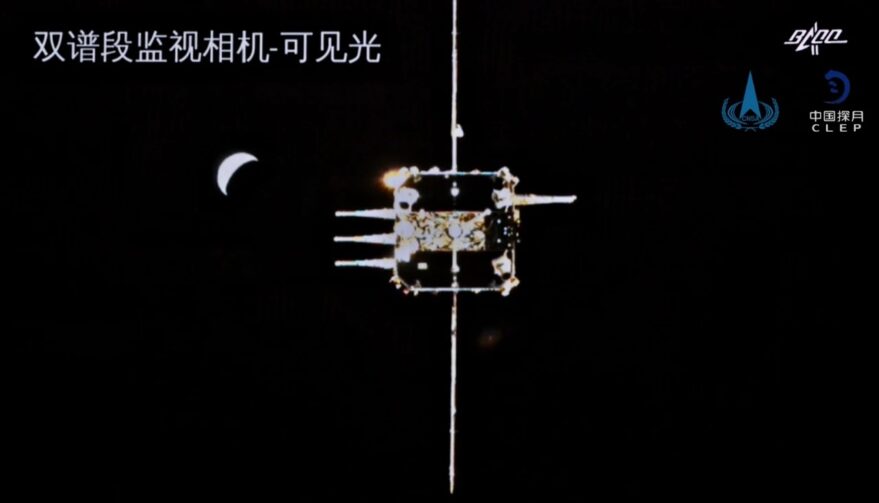
Possible future scenarios for the Chang’e-5 orbiter could include visiting the Sun-Earth L4 or L5 points. These triangular libration points are more stable than the other three points and could harbor near-Earth objects. Imagers could be used to survey the region for speculated Earth Trojan asteroid objects.
Such objects would co-orbit with Earth but lie 60 degrees ahead of (L4) or behind (L5) the planet. In October 2021 NASA will launch LUCY, a first mission to visit Jupiter Trojans.
A paper submitted to the 2018 International Astronautical Congress suggested that Queqiao, the relay satellite facilitating Earth-lunar far side communications for the Chang’e-4 mission, could be sent post-primary mission to Earth-moon L4 or L5 for a similar survey, citing great value for both astronomers and engineers.
Meanwhile on Earth the reentry capsule has since been transferred to Beijing. The canister containing the lunar samples has been handed over to the Chinese Academy of Sciences ahead of preparation, analysis and storage at a specially constructed facility.
Quelle: SNScientists review how they study lunar samples
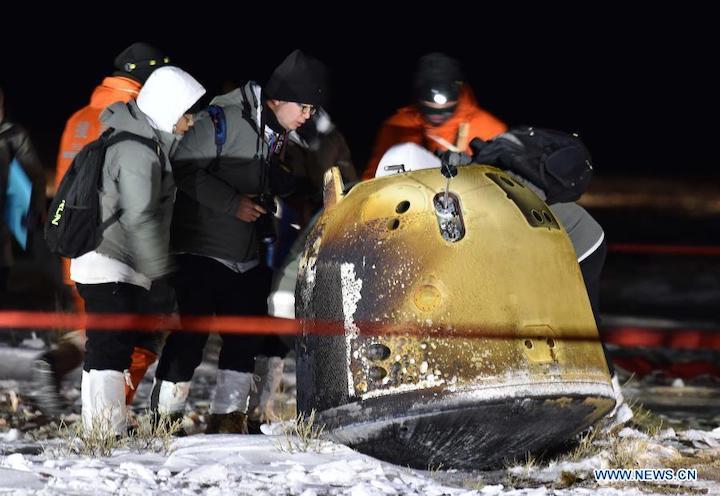
China's Chang'e-5 probe retrieved about 1,731 grams of samples from the moon. It has been much anticipated just how these would be used for research.
Researchers have set up special storage facilities, constructed laboratories for sample processing and analysis, and developed detailed operating procedures to ensure that lunar samples are not contaminated as far as possible and that the research results are reliable.
The samples will be first analyzed non-destructively, said Xiao Long, a researcher at the China University of Geosciences. He told the Science and Technology Daily that this analysis could indicate the condition of the samples.
A method for non-destructive analysis is to obtain the samples' element composition and content information. Researchers do this by analyzing the wavelength and intensity of the characteristic fluorescence X-rays generated by different sample elements, said Zhao Yuyan with Jilin University.
Researchers also implement microanalysis to use them as sparingly as possible. The allowable amount of the samples under test is usually only about one percent of the constant, with a weight of about 1 to 15 milligrams.
Given the preciousness of lunar samples, it is necessary to further improve the sensitivity and resolution of the instruments, and develop new technologies and methods, said Zhao.
By analyzing the samples, scientists can correct the previous mathematical models for estimating the surface age of celestial bodies. They can also provide significant references for humans to understand the geological evolution of the moon.
Chang'e-5 is one of the most complicated and challenging missions in China's aerospace history. It is also the world's first moon-sample mission in more than 40 years.
The Chang'e-5 probe, comprising an orbiter, a lander, an ascender, and a returner, launched on Nov. 24. The return capsule landed in Inner Mongolia Autonomous Region in the early hours of Dec. 17, bringing back the moon samples. Enditem
Quelle: Xinhua
----
Update: 3.01.2021
.
Chinese mission returned nearly 4 pounds of lunar samples
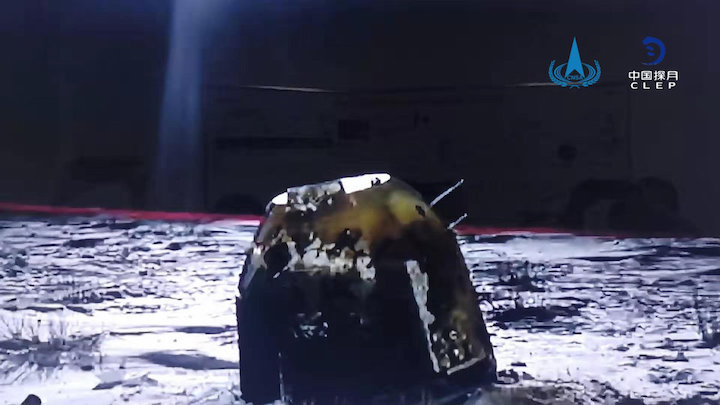
Chinese officials say they plan to share a portion of the nearly 4 pounds of lunar material returned by the Chang’e 5 mission with other countries, but an allocation for U.S. scientists will hinge on a change in U.S. policy restricting cooperation between NASA and China’s space program.
The Chang’e 5 sample return capsule landed in China’s Inner Mongolia region Dec. 16, ending a 23-day robotic mission that brought back the first lunar rocks since 1976. The mission made China the third country, after the United States and Russia, to successfully return samples from the Moon.
Officials from the China National Space Administration, or CNSA, handed over the Chang’e 5 samples to the Chinese Academy of Sciences on Dec. 19 to undergo detailed analyses inside Chinese laboratories.
Wu Yanhua, deputy director of the Chinese space agency, said in a press conference Dec. 17 that China will make some of the Chang’e 5 samples available to international scientists. Some of the specimens will also be put on public display at the National Museum of China in Beijing, and given to the United Nations, Wu said.
China will also “share samples with other countries and scientists around the world in accordance with the relevant international cooperation conventions, as well as multilateral and bilateral cooperation agreements,” Wu said Dec. 17. “We will soon release guidelines on the management of the lunar samples and data.”
Wu said some of the samples may be given to other countries as “diplomatic gifts” following the example set by the United States and Russia, which distributed lunar materials gathered by the Apollo and Luna missions.
Nine missions have returned moon samples to Earth, including NASA’s six Apollo missions with astronauts, and three robotic Luna spacecraft launched by the Soviet Union. NASA’s Apollo missions brought back 842 pounds (382 kilograms) of rocks from the moon.
The Soviet Union’s Luna 24 mission was the last mission to return rocks from the moon in 1976.
Asked in the Dec. 17 press conference whether China will share Chang’e 5’s samples with scientists in the United States, Wu said that depends on U.S. policy.
“The possibility of cooperation between us depends on the U.S. government,” Wu said in translated remarks.
He continued by saying China would like to cooperate with U.S. government agencies, such as NASA, commercial companies, scientists, and engineers on the basis of “equality, mutual benefits, and peace.”
Legislative language inserted in appropriations bills since 2011 has largely restricted NASA’s cooperation with the Chinese space program. There have been a few exceptions, such as multilateral meetings and bilateral discussions between NASA and Chinese officials regarding Earth science research.
The language was first added by former Rep. Frank Wolf (R-Virginia) to NASA’s section of a government appropriations bill in 2011, and similar provisions have been part of appropriations bills every year since then.
Wu called the provision, known as the Wolf Amendment, “unfortunate” in the Dec. 17 press conference.
NASA said in a statement after Chang’e 5’s launch that it hopes China “shares its data with the global scientific community to enhance our understanding of the moon like our Apollo missions did and the Artemis program will.”
The Artemis program is NASA’s effort to return astronauts to the lunar surface for the first time since 1972.
Wu said the European Space Agency, Argentina, Namibia, Pakistan, and other countries assisted China in executing the Chang’e 5 mission. ESA provided tracking and communications support, and Argentina hosts a Chinese ground station.
Clive Neal, a planetary geologist at the University of Notre Dame, said an interview before the mission’s launch Nov. 23 that he would be surprised if the Chang’e 5 samples are distributed to the United States, at least initially.
“I don’t expect them to come to the U.S. given the souring of relations between China and the U.S. at the political level,” Neal said. “However, I think there will be potential collaborations between scientists. The lunar science community is international in nature, and we tend to get along pretty well. So I’m hoping the results will be made available through our science colleagues, even if the samples can’t come out of China.”
The Chang’e 5 mission came after successful landings of Chinese spacecraft on the Moon in 2013 and 2019. The landing in 2019, on the Chang’e 4 mission, was the first soft touchdown of a spacecraft on the far side of the Moon.
Chang’e 5 landed on the near side of the moon in the Oceanus Procellarum, or Ocean of Storms, region, east of a volcanic plateau named Mons Rümker.
There is evidence that rocks in Chang’e 5’s landing zone are much younger than those returned by the Apollo astronauts. Those specimens are some 3.5 billion years old, created during a period of active volcanism in the first billion years of the moon’s existence.
Lava plains to the east of Mons Rümker appear to be less battered by asteroid impacts, suggesting rocks there could be less than 2 billion years old. But models of the moon’s evolution suggest its internal heating should have diminished by that time, rendering volcanoes extinct, Neal said.
“This is a whole new sampling region,” said Li Chunlai, deputy chief designer of the Chang’e 5 mission. “We’ve got the fresh new samples for research, which should be of great scientific value in areas including weathering, volcanism, the regional geological background, and evolution fo the Moon.
“Most of the samples will be used for scientific research,” Li said. “We will conduct long-term and systematic research on lunar samples in the laboratory, including its structure, physical properties, chemical composition, isotopic composition, characteristics of the minerals, and the geological evolution behind the samples.”
Chang’e 5 was designed to return a bit more material than the 3.8 pounds (1.731 kilograms) of samples it actually brought back to Earth.
The mission’s robotic lander drilled specimens from within the lunar crust, and a scoop gathered fine-grained material from the surface.
“We were going to drill a 2-meter-deep (6.6-foot) hole,” said Hu Hao, chief designer of the third phase of China’s lunar exploration program. “However, while the lander started drilling there, the radar echograms showed that there were several layers of slates underneath the landing site. So we were unable to go further down when we reached about 1 meter (3.3 feet) deep.”
Chinese officials decided to forego further drilling and not risk spending too much time on the operation before commanding the lander to continue with its next tasks. The landing craft’s time on the Moon’s surface was limited to about two days.
NASA set aside some of the hundreds of pounds of Apollo lunar samples for analysis using lab technology unavailable 50 years ago. U.S. scientists began analyzing some of the previously-unopened samples in 2019.
While the Apollo missions returned significantly more material than Chang’e 5, the Chinese mission may have returned clues about a different era in the Moon’s history.
“All of Apollo and Luna sites selected for sampling were old,” said Brett Denevi, a planetary geologist at the Johns Hopkins University’s Applied Physics Laboratory. “And of the sites that were on terrain shaped by volcanism, the volcanic eruptions occurred over 3 billion years ago.
“What is exciting about the Chang’e 5 sampling location is that it is on a volcanic deposit that may have formed closer to 1 billion years ago,” Denevi said. “That might sound old still, but for the Moon, that would have been the last major gasp of volcanism, so those samples will give us what may have been the final chapter in the story of volcanic eruptions on the Moon and how the interior of the moon evolved over time as eruptions waned.”
China’s next lunar mission, Chang’e 6, will attempt to return samples from the Moon’s south pole region in 2023.
Wu said China will launch the Chang’e 7 and Chang’e 8 robotic lunar missions to test technologies and perform further scientific research before China sends astronauts to the Moon. He did not say when the Chang’e 7, Chang’e 8, or a future human expedition might launch.
Quelle: SN
----
Update: 21.03.2021
.
Chang’e-5 orbiter reaches Lagrange point on extended mission
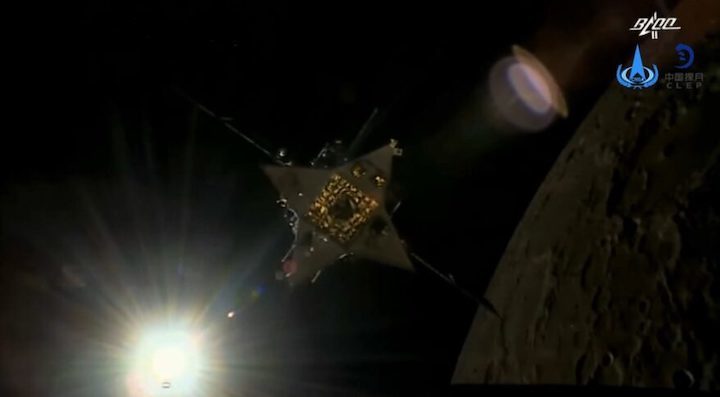
HELSINKI — A spacecraft involved in China’s 2020 lunar sample return mission has entered orbit around Sun-Earth Lagrange point 1 as part of an extended mission.
The Chang’e-5 orbiter successfully entered an intended orbit around the Lagrange point at 1:29 a.m. Eastern March 15, the China Aerospace Science and Technology Corp. (CASC), the spacecraft’s manufacturer, stated March 19.
The spacecraft will carry out a range of tests and solar observations under the control of the Beijing Aerospace Control Center (BACC). Possible future destinations for extended activities are being considered.
The extended Chang’e-5 mission is China’s first excursion to Sun-Earth L1 and first Chinese spacecraft to move inside the orbit of the Earth.
The orbiter in December facilitated the delivery to Earth of a reentry capsule containing collected lunar materials. It then utilized propellant saved through a highly-accurate launch and trans-lunar injection to embark on an additional journey.
Sun-Earth L1, located about 1.5 million kilometers from Earth, is one of a number of points near two large co-orbiting bodies at which gravitational and centrifugal forces are balanced, allowing spacecraft to maintain an orbit around with minimal station keeping.
NASA’s DSCOVR deep space climate observatory mission is one of a number of spacecraft to have utilized Sun-Earth Lagrange point 1. The location of the Lagrange point makes it suited to long term, unobstructed observations of the Earth and the Sun.
Chang’e-5 return, continuation
The Chang’e-5 orbiter was instrumental in the successful collection of lunar material from Oceanus Procellarum late last year.
The mission launched in late November and saw a lander spacecraft set down near Mons Rümker Dec. 1. Collected samples were delivered to the Chang’e-5 orbiter by an ascent vehicle following a robotic lunar orbit rendezvous and docking procedure.
The orbiter left lunar orbit Dec. 12 along with a return capsule containing lunar samples. The two spacecraft separated around 5,000 kilometers from Earth Dec 16., with the return capsule performing a ‘skip’ reentry into the atmosphere.
The return capsule landed at 12:59 Eastern Dec. 16 with 1.731 kilograms of lunar materials. The orbiter performed a maneuver to set it on a course for Sun-Earth L1.
Possible future scenarios for the Chang’e-5 orbiter could include visiting the Sun-Earth L4 or L5 points. These triangular libration points located 60 degrees ahead and behind Earth in its orbit are more stable than the other three points and could harbor near-Earth objects. Imagers could be used to survey the region for speculated Earth Trojan asteroid objects.
Potential visits of Venus or 469219 Kamoʻoalewa (2016 HO3), the stated target for China’s 2024 Zhenghe near-Earth asteroid sampling mission, are considered unlikely based on estimates of remaining propellant and required changes in velocity.
Lunar far side update
China’s ongoing Chang’e-4 lunar far side mission is meanwhile expected to complete its 28th lunar Day Saturday, March 20.
The January 2019 landing marked the first soft landing on the lunar far side, with communications facilitated by a relay satellite stationed in orbit around Earth-moon Lagrange point 2 beyond the moon.
The Chang’e-4 lander and Yutu-2 rover have been operating on the moon for over Earth 800 days. The solar-powered spacecraft enter a hibernation state for the intensely cold lunar nights.
The Yutu-2 rover has so far driven 652.62 meters across Von Kármán crater and is about 429 meters distant from the lander.
The mission has produced data on the local subsurface structure, potential detection of material derived from the lunar mantle, diverse rock types and secondary crater fragments encountered by the rover, first radiation dose measurements from the lunar surface and local impact histories.
China is next planning a number of Chang’e missions to the lunar south pole. These in concert with planned Russian missions are considered the starting point for a basic stage “International Lunar Research Station”, tentatively to be expanded into more permanent robotic facilities and potential crewed visits and long term stays.

